Using cv2.fisheye.distortPoints() we may obtain the coordinates of the destination (distorted) image from those of the source image.
As described here and here, "Note that the function assumes the camera matrix of the undistorted points to be identity. This means if you want to transform back points undistorted with undistortPoints() you have to multiply them with P−1".
The function cv2.fisheye.undistortPoints() accepts normalized coordinates as an input, hence we need to multiply the original indices by the inverse of the camera intrinsic matrix, as shown below.
The matrix camera intrinsic K and the distortion coefficients d are needed to be obtained through the camera calibration:
The input parrot image can be obtained from here.
import matplotlib.pylab as plt
import cv2
K = np.array( [[338.37324094,0,319.5],[0,339.059099,239.5],[0,0,1]], dtype=np.float32) # camera intrinsic parameters
d = np.array([0.17149, -0.27191, 0.25787, -0.08054], dtype=np.float32) # k1, k2, k3, k4 - distortion coefficients
def apply_fisheye_effect(img, K, d):
indices = np.array(np.meshgrid(range(img.shape[0]), range(img.shape[1]))).T \
.reshape(np.prod(img.shape[:2]), -1).astype(np.float32)
Kinv = np.linalg.inv(K)
indices1 = np.zeros_like(indices, dtype=np.float32)
for i in range(len(indices)):
x, y = indices[i]
indices1[i] = (Kinv @ np.array([[x], [y], [1]])).squeeze()[:2]
indices1 = indices1[np.newaxis, :, :]
in_indices = cv2.fisheye.distortPoints(indices1, K, d)
indices, in_indices = indices.squeeze(), in_indices.squeeze()
distorted_img = np.zeros_like(img)
for i in range(len(indices)):
x, y = indices[i]
ix, iy = in_indices[i]
if (ix < img.shape[0]) and (iy < img.shape[1]):
distorted_img[int(ix),int(iy)] = img[int(x),int(y)]
return distorted_img
K = np.array( [[338.37324094,0,319.5],[0,339.059099,239.5],[0,0,1]],dtype=np.float32) # camera intrinsic params
d = np.array([0.17149, -0.27191, 0.25787, -0.08054],dtype=np.float32) # k1, k2, k3, k4 - distortion coefficients
img = plt.imread('parrot.jpg')
img = img / img.max()
distorted_img = apply_fisheye_effect(img, K, d)
plt.figure(figsize=(15,7))
plt.subplot(121), plt.imshow(img, aspect='auto'), plt.axis('off'), plt.title('original', size=20)
plt.subplot(122), plt.imshow(distorted_img, aspect='auto'), plt.axis('off'), plt.title('distorted', size=20)
plt.show()

Note that the above implementation can be made much faster by sampling a few points (instead of all the points) and using interpolation (with scipy, e.g.).
